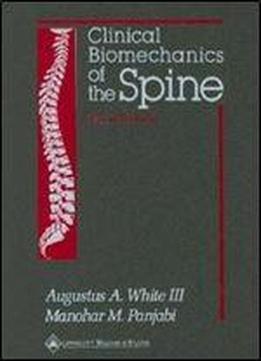
Clinical Biomechanics Of The Spine (2nd Edition)
by Augustus A. White /
1990 / English / PDF
142.7 MB Download
It is now little more than a decade since White and Panjabi's Clinical Biomechanics of the Spine first appeared. Meanwhile, this monumental work has become a classic, extensively quoted in papers, basic as well|as clinical, that deal with traumatic or painful conditions in the cervical, thoracic, or lumbar spine. Since 1978 there has been an enormous increase in scientific contributions from engineers and physicians, particularly from orthopedic surgeons interested in the biomechanics of spinal disorders. In the last decade, more papers have been published in this area than ever before. Biology is implicit in the word "biomechanics." and in this comprehensive text the authors also have included recent basic studies in connective tissue and muscle physiology that are of importance for the mechanics of the spine. The sad truth, howeve r. it ha 11 h is astou nd i ng a mou nt of i n crea sed basic knowledge has not been mirrored at all in any scientific evidence of improved care for our patients with spinal disorders. The burden now rests heavily on the clinicians to put to work all of the knowledge brought forward by the many studies in spine biomechanics—knowledge that is again collected and presented in an admirable and easily understandable manner by the esteemed researchers White and Ranjabi. This knowledgeable physician/engineer team has created an updated platform on which we physicians and surgeons should stand when performing our prospective clinical studies in the next decade, an absolute necessity for further advancement in our field. All too frequently, clinicians err on even the most fundamental parts of this accumulated knowledge and subject patients to experimentation in the operating theater or treatment rooms that would be regarded as unethical and maybe even unlawful if the same principles were applied, for example, in the field of pharmacologic treatment. An example is the recent and rapid increase in the number of spine implants, many of which have not yet been adequately tested in the fashion exemplified in this text before being used in patients with illdefined pain syndromes.











